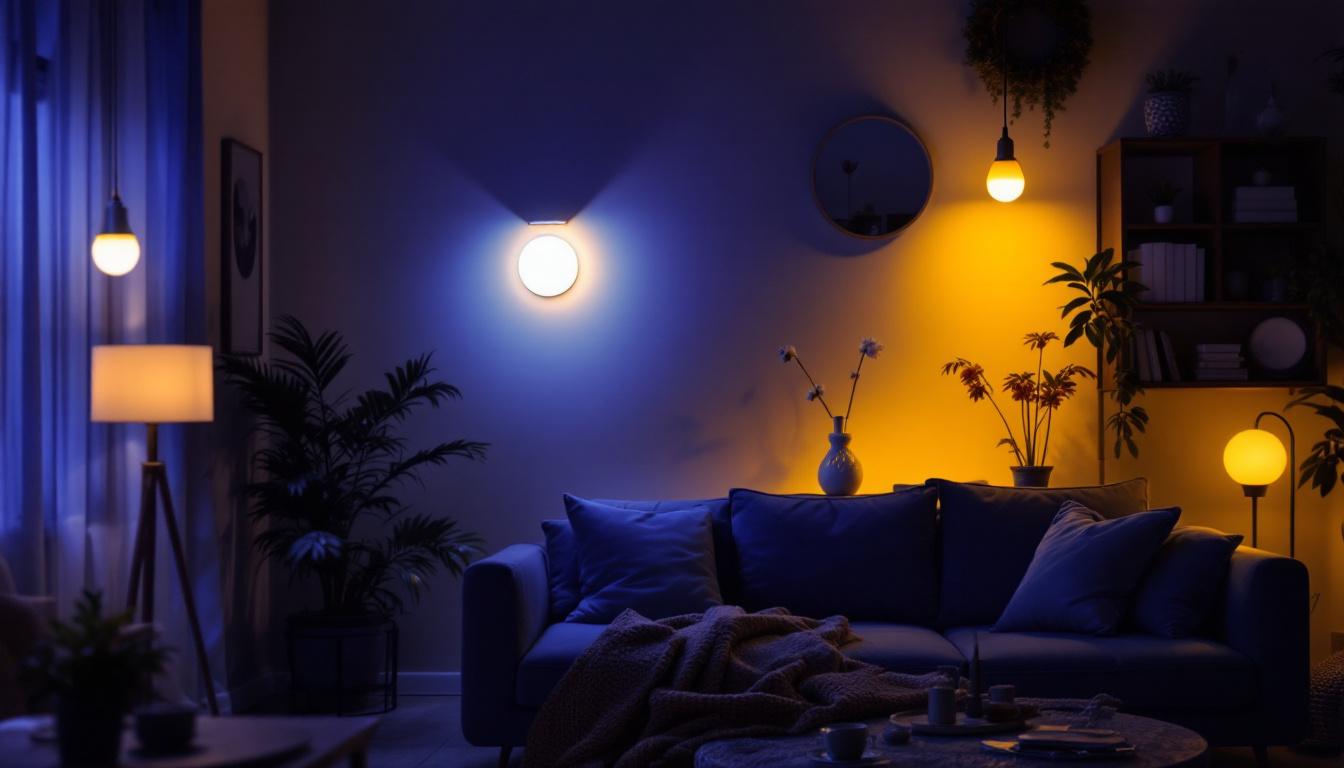
LED lights have revolutionized the lighting industry with their energy efficiency, longevity, and versatility. However, many lighting contractors face challenges when it comes to dimming these lights effectively. Understanding the nuances of LED dimming can enhance the overall experience for clients and ensure optimal performance. This article provides valuable insights and quick tips for lighting contractors on how to dim LED lights efficiently.
Before delving into the methods of dimming LED lights, it is essential to grasp the fundamental principles behind LED technology. Unlike traditional incandescent bulbs, which dim by reducing the voltage, LEDs require a different approach. This understanding is crucial for contractors aiming to provide seamless dimming solutions. LEDs operate by passing current through a semiconductor material, which emits light when energized. This characteristic means that simply reducing voltage may not yield the desired dimming effect and can even lead to flickering or reduced lifespan of the bulbs.
There are several dimming methods available for LED lights, each with its advantages and limitations. The most common types include:
Not all LED fixtures are created equal when it comes to dimming. It is vital for contractors to ensure that the LED lights being installed are compatible with the chosen dimming method. Checking the manufacturer’s specifications can save time and prevent potential issues down the line. Some LED lights are designed specifically for dimming, while others may not perform well when connected to dimmers. Additionally, the quality of the dimmer itself can significantly influence the performance of the LED lights. High-quality dimmers can enhance the overall dimming experience, providing a smooth transition between brightness levels without flickering or buzzing.
Furthermore, it is important to consider the total load on the dimmer. Each dimmer has a maximum wattage rating, and exceeding this limit can lead to overheating and potential failure. When planning a dimming system, contractors should calculate the total wattage of all connected LED fixtures to ensure compatibility and safety. This attention to detail not only ensures optimal performance but also extends the lifespan of both the dimmer and the LED fixtures, making it a critical aspect of any lighting installation project.
The selection of an appropriate dimmer switch is critical for achieving the desired dimming effect. A poorly chosen dimmer can lead to flickering, buzzing, or even damage to the LED lights. Here are some key considerations when selecting a dimmer switch:
Dimmer switches come with specific load ratings. It is essential to match the total wattage of the LED fixtures with the dimmer’s capacity. For example, if the total wattage of the LED lights exceeds the dimmer’s rating, it can lead to overheating and failure. Always calculate the load accurately to ensure compatibility. Furthermore, it is advisable to consider the type of lighting being used; for instance, some LED fixtures may have a lower wattage but require a higher load capacity due to their unique circuitry. Understanding these nuances can prevent potential issues down the line and ensure a smooth operation of your lighting system.
As mentioned earlier, different dimming technologies exist. When selecting a dimmer switch, consider the type of technology that best suits the installation. For instance, if using a phase-cut dimmer, ensure it is compatible with the specific type of LED lights being installed. Additionally, some dimmers are designed to work with a wider range of LED products, which can simplify the installation process. It’s also worth noting that newer technologies, such as digital dimming, offer enhanced precision and smoother transitions between brightness levels. These advancements can significantly improve the overall ambiance of a space, making it essential to stay informed about the latest developments in dimming technology.
Modern dimmer switches often come with additional features such as remote control, programmable settings, and scene control. Depending on the client’s needs, these features can enhance the usability and functionality of the lighting system. Contractors should assess the requirements of the project and recommend dimmers that align with the client’s preferences. For example, a homeowner who enjoys hosting gatherings may benefit from a dimmer that allows for customizable lighting scenes, creating the perfect atmosphere for different occasions. Moreover, smart dimmers can integrate with home automation systems, allowing users to control their lighting via smartphone apps or voice commands, adding an extra layer of convenience and modernity to their living spaces. This level of customization not only enhances the user experience but also allows for energy savings by optimizing lighting use based on time of day or activity.
Proper installation is crucial for achieving optimal dimming performance. Here are some practical tips for lighting contractors during the installation process:
When installing dimmer switches, pay close attention to the wiring. Ensure that the dimmer is wired correctly according to the manufacturer’s instructions. Incorrect wiring can lead to malfunctioning dimmers or even electrical hazards. It is advisable to double-check connections and use appropriate wire gauges to handle the load safely.
Before completing the installation, conduct thorough testing of the dimming functionality. This includes checking for smooth dimming transitions, ensuring no flickering occurs at lower brightness levels, and verifying that the dimmer responds correctly to user inputs. Addressing any issues during this phase can prevent callbacks and enhance client satisfaction.
Even with careful planning and installation, issues may arise when dimming LED lights. Being prepared to troubleshoot common problems can save time and improve service quality.
One of the most common issues faced with dimmable LED lights is flickering. This can stem from several factors, including incompatible dimmer switches, poor-quality LED bulbs, or incorrect wiring. If flickering occurs, first check the compatibility of the dimmer with the LED lights. If they are compatible, inspect the wiring and connections for any loose ends or faults.
Buzzing or humming noises from LED lights can be distracting and indicate a problem with the dimmer or the bulbs themselves. This issue often arises from using a dimmer that is not designed for LED lights. Replacing the dimmer with a compatible model can often resolve this issue. Additionally, ensuring that the load on the dimmer is within the specified range can help eliminate unwanted noise.
Inconsistent dimming levels can frustrate clients and diminish their overall experience. This issue can occur when multiple brands or types of LED lights are mixed in a single circuit. To achieve consistent dimming, it is advisable to use the same brand and model of LED lights throughout the installation. If mixing is necessary, consult the manufacturer’s guidelines for compatibility.
For contractors looking to offer more sophisticated lighting solutions, exploring advanced dimming technologies can set them apart from the competition. These solutions can provide enhanced control and flexibility for clients.
Smart dimming systems allow users to control their lighting via smartphones or voice-activated devices. These systems can integrate with home automation setups, providing a seamless user experience. Contractors should consider recommending smart dimmers for clients interested in modern, tech-savvy solutions. These systems often come with features such as scheduling, remote access, and scene setting, making them appealing for residential and commercial applications alike.
Wireless dimming solutions eliminate the need for extensive wiring, making them an attractive option for retrofitting existing spaces. These systems use wireless protocols to communicate between dimmers and lights, allowing for easy installation and flexibility in design. Contractors can offer these solutions as a way to enhance the aesthetics of a space without compromising functionality.
Dimming LED lights effectively requires a thorough understanding of the technology, compatibility, and installation practices. By following the tips outlined in this article, lighting contractors can enhance their service offerings and ensure client satisfaction. Whether dealing with basic dimming setups or advanced smart systems, the key is to stay informed and adaptable in an ever-evolving lighting landscape. With the right knowledge and tools, achieving optimal dimming performance is within reach.
Ready to elevate your lighting installations with the best in LED technology? Look no further than LumenWholesale, where we provide lighting contractors with superior, spec-grade lighting products at unbeatable wholesale prices. Our commitment to quality, affordability, and convenience ensures that you have access to a vast selection of top-tier lighting solutions for any project. Say goodbye to inflated markups and hello to hassle-free bulk buying with free shipping. Don’t compromise on performance—choose LumenWholesale for premium lighting that meets the highest industry standards. Visit us now at Wholesale Lighting at the Best Value and make your next project shine brighter than ever.

Discover the essential guide to 4-inch can light trim with our comprehensive handbook tailored for lighting contractors.

Discover the essential insights lighting contractors need about the 25 Watt Bulb Type G.

Discover expert tips and strategies for lighting contractors to master outdoor post lantern installations.

Discover the transformative impact of flexible LED strips in modern lighting installations.